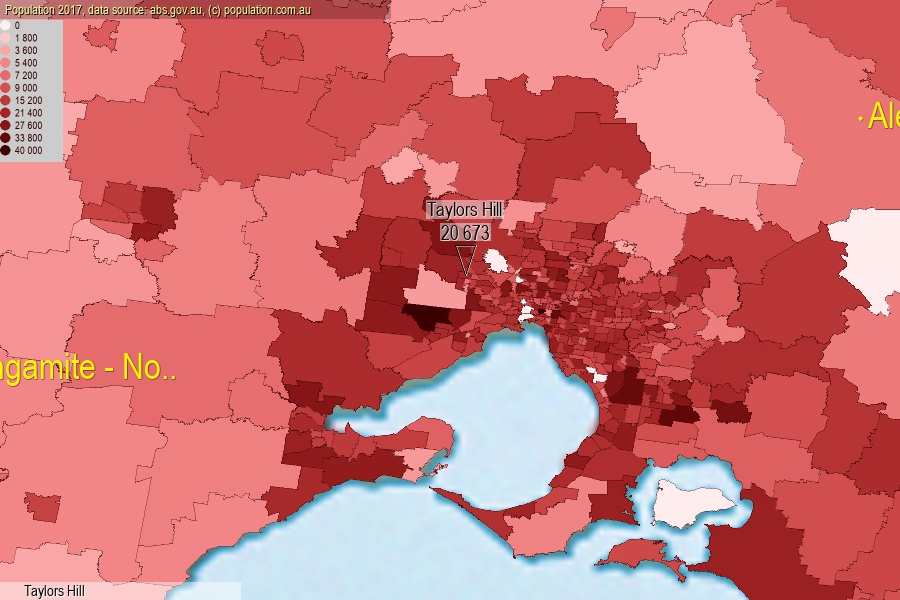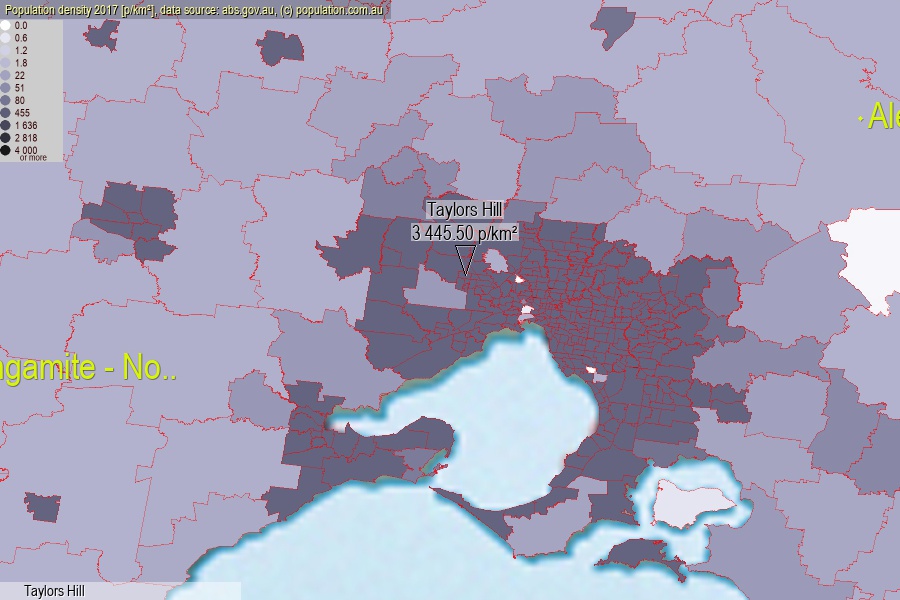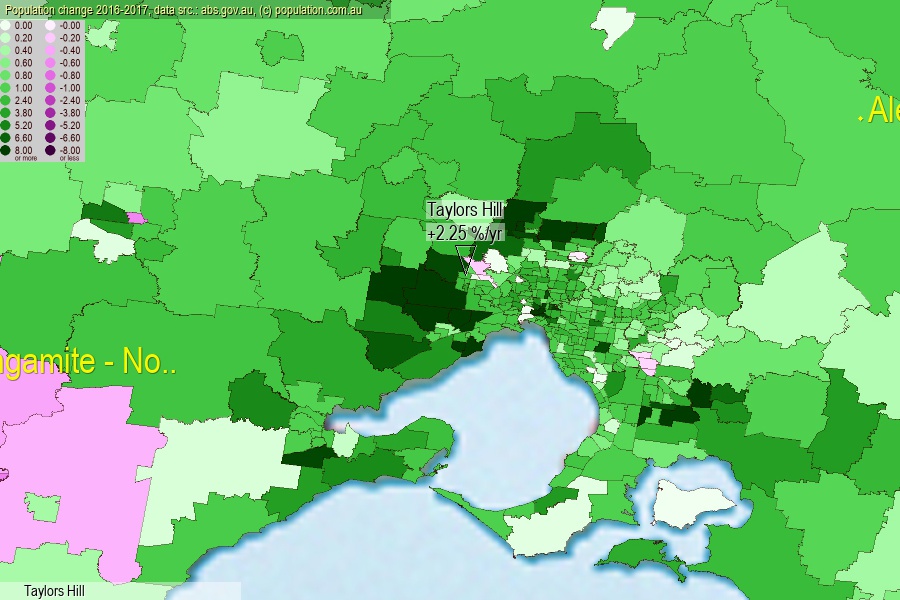 population.com.au
population.com.auLast official estimated population of Taylors Hill (as Statistical Area Level 2) was 20 673 people (on 2017-06-30)[2]. This was 0.08% of total Australian population and 0.322% of VIC population. Area of Taylors Hill is 6.00 km², in this year population density was 3 445.50 p/km² . If population growth rate would be same as in period 2016-2017 (+2.25%/yr), Taylors Hill population in 2025 would be 24 702. [0]



Click to enlarge. Taylors Hill is located in the center of the images.
Population [people], population density [p./km²] and population change [%/year] [2]
View borders » (new window) [4]
[1991-1992] +180.00 %/Yr.
[1992-1993] +64.29 %/Yr.
[1993-1994] +37.39 %/Yr.
[1994-1995] +28.48 %/Yr.
[1995-1996] +21.67 %/Yr.
[1996-1997] +19.84 %/Yr.
[1997-1998] +23.65 %/Yr.
[1998-1999] +18.85 %/Yr.
[1999-2000] +17.70 %/Yr.
[2000-2001] +18.16 %/Yr.
[2001-2002] +124.79 %/Yr.
[2002-2003] +94.71 %/Yr.
[2003-2004] +53.74 %/Yr.
[2004-2005] +49.18 %/Yr.
[2005-2006] +35.90 %/Yr.
[2006-2007] +24.91 %/Yr.
[2007-2008] +17.20 %/Yr.
[2008-2009] +13.83 %/Yr.
[2009-2010] +10.59 %/Yr.
[2010-2011] +5.27 %/Yr.
[2011-2012] +6.12 %/Yr.
[2012-2013] +5.53 %/Yr.
[2013-2014] +4.21 %/Yr.
[2014-2015] +4.29 %/Yr.
[2015-2016] +3.76 %/Yr.
[2016-2017] +2.25 %/Yr.
[0] Calculated with linear interpolation from officially estimated population
[1] Read more about SA2 and Australian Statistical Geography Standard (ASGS) on abs.gov.au
[2] Population data from Australian Bureau of Statistics (Population and density: 2017; change: 2016-2017)
[3] Digital Boundaries: Australian Statistical Geography Standard (ASGS) 2016.
[4] Border coordinates are simplifyed using Ramer-Douglas-Peucker algorithm.